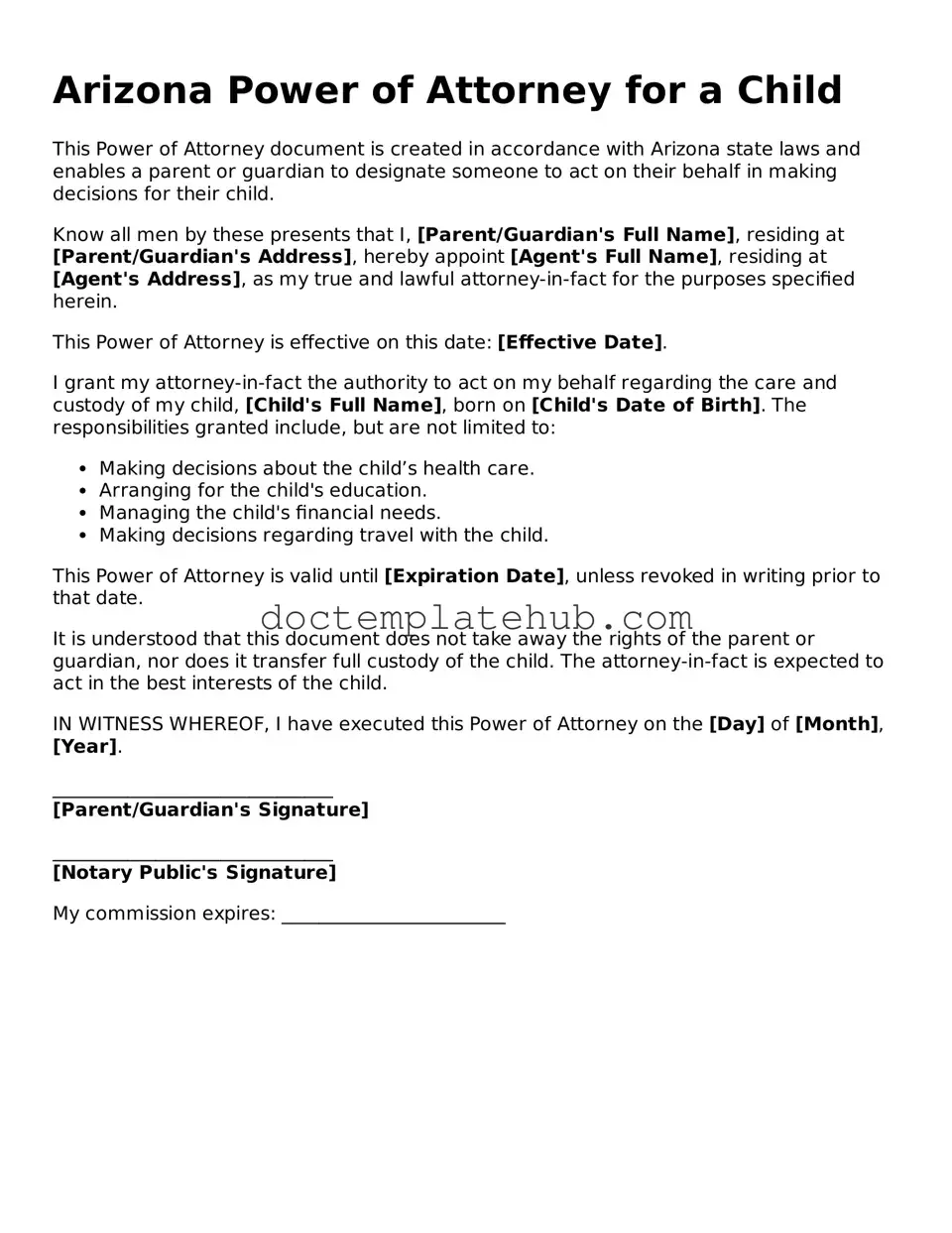The Arizona Power of Attorney for a Child form is similar to a general Power of Attorney document. Both forms allow an individual to designate another person to act on their behalf. In the case of the general Power of Attorney, it can cover a wide range of decisions, including financial and medical matters. The key difference lies in the specific focus of the Power of Attorney for a Child, which is tailored to address the needs and responsibilities associated with the care and custody of a minor child.
Another related document is the Child Custody Agreement. This agreement outlines the terms under which parents or guardians share the responsibilities and rights concerning a child's upbringing. Like the Power of Attorney for a Child, it emphasizes the welfare of the child. However, the Child Custody Agreement typically arises from divorce or separation situations, whereas the Power of Attorney can be used in various circumstances, including temporary situations where a parent cannot care for the child.
The Temporary Guardianship form also bears similarities to the Power of Attorney for a Child. This document allows a parent to appoint a guardian to care for their child for a specified period. Both documents serve to ensure that a child's needs are met when a parent is unavailable. However, a Temporary Guardianship often requires court approval, whereas the Power of Attorney can be executed without judicial oversight.
Understanding various legal documents is essential for parents, particularly when it comes to ensuring their child's well-being and care. For instance, a smarttemplates.net offers templates that can be helpful in creating necessary documentation, such as Power of Attorney forms tailored for children, establishing clear guidelines and responsibilities for decision-making in various situations. These documents, whether for healthcare or travel, provide parents with the tools to navigate the complexities of guardianship and custody, ensuring that the child's best interests remain a priority.
The Medical Power of Attorney is another document that shares characteristics with the Power of Attorney for a Child. This form allows an individual to appoint someone to make medical decisions on their behalf. In the context of a child, the Power of Attorney for a Child can include medical decisions, thereby providing a comprehensive approach to the child's care. Both documents prioritize the health and well-being of the individual, whether an adult or a minor.
The Authorization for Release of Medical Records is similar in that it allows designated individuals to access a child's medical information. This document is crucial for ensuring that caregivers have the necessary information to make informed decisions about a child's health. While the Power of Attorney for a Child grants broader authority, the Authorization for Release is more focused on medical data access and sharing.
The Child Care Agreement is another related document. This agreement details the terms under which a caregiver will provide care for a child. It can include payment arrangements, responsibilities, and schedules. Like the Power of Attorney for a Child, it aims to ensure the child's needs are met. However, it often focuses more on the logistical aspects of care rather than legal authority.
The Consent for Medical Treatment form is also similar. This document allows a parent or guardian to give permission for medical treatment for their child. While the Power of Attorney for a Child encompasses broader authority, including the ability to make ongoing decisions, the Consent for Medical Treatment is typically used for specific instances of care. Both forms aim to protect the child's health and ensure appropriate medical care is provided.
Lastly, the Adoption Agreement has parallels with the Power of Attorney for a Child. In adoption situations, a legal transfer of parental rights occurs, granting new guardians the authority to make decisions for the child. Both documents focus on the child's best interests and ensure that responsible adults are authorized to make decisions. However, adoption is a permanent legal change, while the Power of Attorney for a Child is often temporary and can be revoked by the parent at any time.
